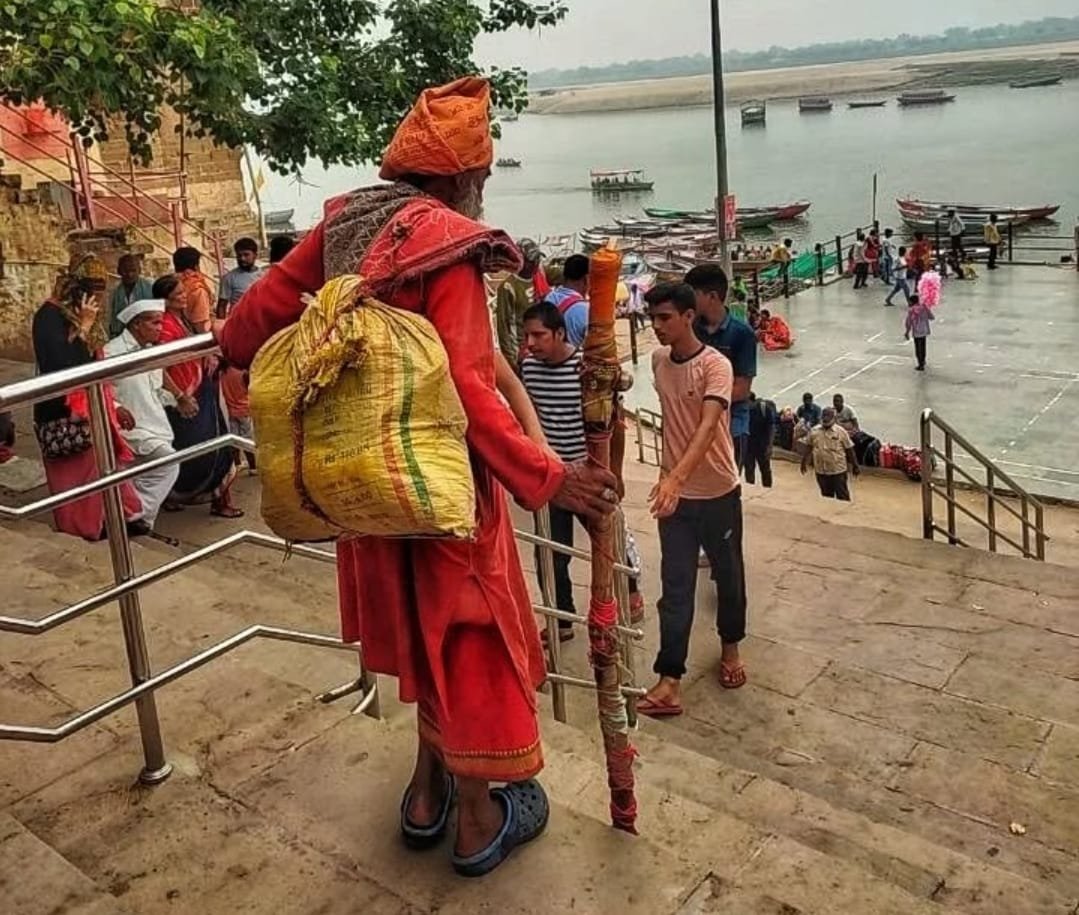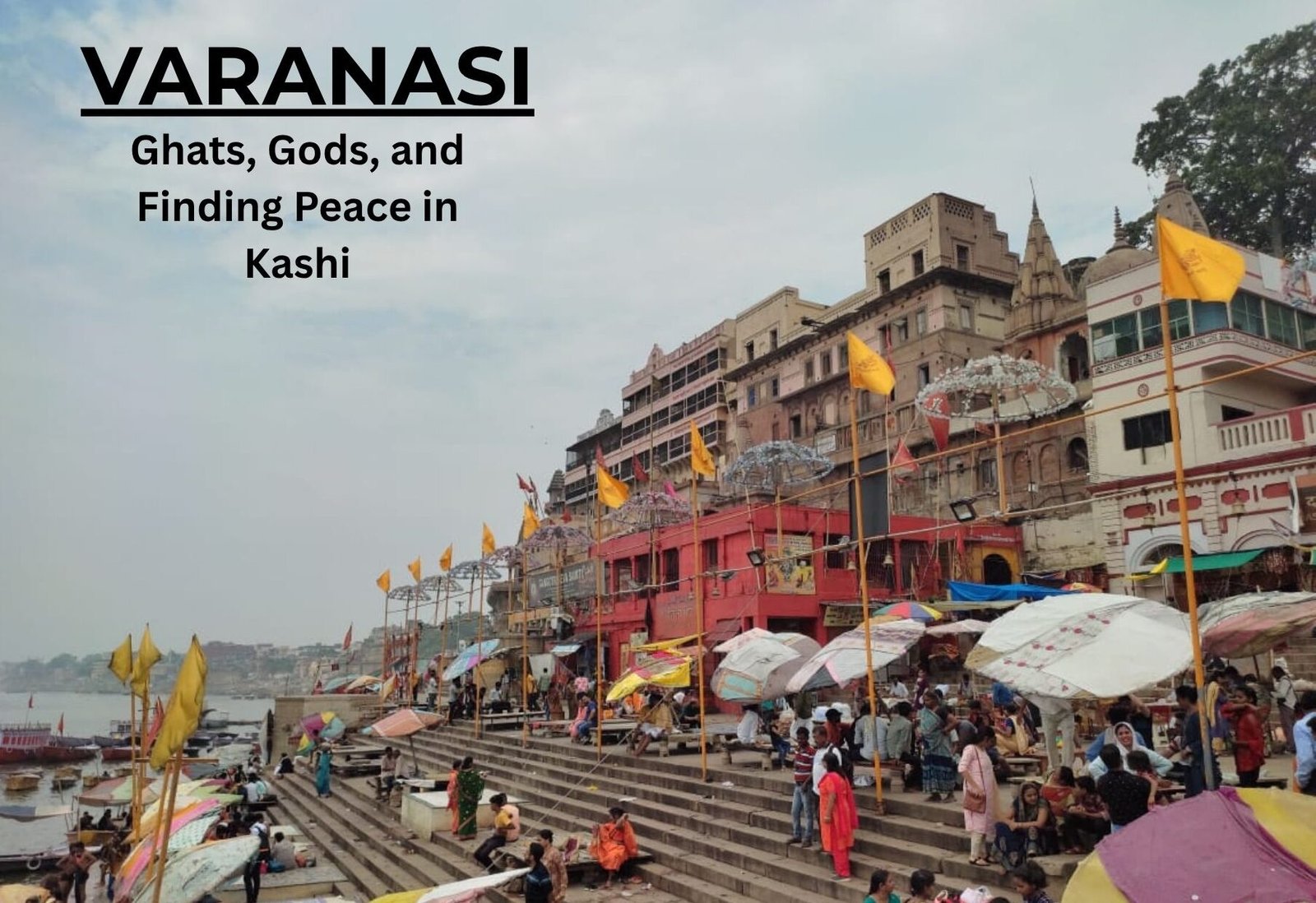Varanasi, or Kashi, is not a city you simply visit; it’s an experience that envelops you. As one of the seven sacred Sapta Puri cities, it holds a unique place in India’s spiritual geography. This journey was different from my usual solo travels. I was traveling with my mother, aunt, uncle, and my young nephew, Vihaan. Our goal was to navigate the city’s ancient faith not just as individuals, but as a family, bridging generations in the city of light and liberation.
For those planning a similar family trip, let’s cover the essentials first. Our journey began on the Vande Bharat Express from Delhi, an efficient 8-hour ride that gets you to Varanasi by early afternoon. For the quintessential Kashi experience, you must witness the Ganga Aarti at Dashashwamedh Ghat, explore the food stalls at Assi Ghat, and try the iconic chaat at Kashi Chaat Bhandar. A crucial tip for families, especially with elders, is to pre-book your darshan for the Kashi Vishwanath Temple online to avoid the overwhelming queues.
The Journey to the City of Light
The swift, modern comfort of the Vande Bharat train offered a stark contrast to the ancient, timeless city we were approaching. Arriving in Varanasi is an immediate immersion. The air is thick with history, a blend of incense, flowers, and the everyday bustle of life and death coexisting. We checked into our hotel, and the adventure began, guided by my mother’s devotion and Vihaan’s wide-eyed curiosity.
Navigating Faith and Family at the Ghats

Varanasi is defined by its 84 ghats, the steps leading down to the river Ganga, stretching between the Varuna and Assi rivers. Each ghat tells a story.
- Dashashwamedh Ghat: The evening Ganga Aarti here is a grand, theatrical spectacle of fire, sound, and synchronized ritual. Finding a spot amidst the dense crowd, we watched the priests perform their tribute to the river. It was chaotic and beautiful, a sensory overload that somehow leads to a strange sense of calm.
- Manikarnika Ghat: Visiting the main cremation ghat was a profound experience. We stood at a respectful distance, near the iconic Blue Lassi shop, sipping on our drinks while observing the final rites. It was here that the concept of moksha (liberation) transcended scripture. I saw it not in books, but on the faces of the families—a look of solemn duty, of grief, and of a deep, abiding faith that this was not an end, but a sacred passage.
- Kashi Vishwanath Temple: The energy around one of the twelve Jyotirlingas is immense. Knowing the long queues would be too strenuous for my mother and aunt, I had booked our darshan online. This was the best decision of our trip. It allowed us a smoother, more peaceful experience inside the temple. Standing there, I reflected on the temple’s history—repeatedly destroyed by invaders like Qutb-ud-din Aibak and Aurangzeb, and resiliently rebuilt, most famously by the great Maratha queen Ahilyabai Holkar in the 18th century.
Beyond the Ghats: The Enduring Peace of Sarnath
While Varanasi’s ghats are intense, a short drive away lies Sarnath, a place of profound tranquility. This is where Gautam Buddha delivered his first sermon after attaining enlightenment.
Walking through the monastic ruins and seeing the Dhamek Stupa, I felt a palpable sense of peace. The Sarnath Museum is an absolute treasure. Standing before the original Lion Capital of Ashoka, our national emblem, was a moment of deep patriotic and historical connection. The intricate carvings and the serene Buddha statues, excavated and preserved by archaeologists like Alexander Cunningham, tell a story of India’s rich past.
My honest take: while some “must-visit” spots can be overwhelming, Sarnath is non-negotiable. For anyone who loves history, art, or the story of India itself, it is an essential pilgrimage.
A Practical Guide for Family Travel in Varanasi
- Book Darshan Online: For the Kashi Vishwanath Temple, use the official online portal to book your slot. You will need a printed copy of the ticket. This is a blessing for traveling with elders or children.
- Explore the Food Scene: Don’t miss the Tomato Chaat and Chura Matar at Kashi Chaat Bhandar (though I honestly found the chaat a bit disappointing, the experience was worth it). The Poori-Kachori breakfast at Ram Bhandar is iconic, as is the Litti Chokha at Assi Ghat.
- Navigate with Respect: Remember that Varanasi is a living, breathing holy city for millions. Dress modestly, respect temple protocols (no phones allowed inside Kashi Vishwanath), and be mindful when near cremation ghats.
- Shop Smart: If you’re looking for Banarasi silk, go to reputable shops and be prepared to bargain respectfully. The dupattas and suits make for beautiful, timeless souvenirs.
- Mention of Bhang: You will see shops selling bhang, a cannabis-infused drink associated with Lord Shiva. While it’s a part of the city’s culture, we chose to observe rather than partake, and I’d advise caution for any traveler.
A Final Reflection
This journey was different. We missed the famous sunrise boat ride, but it didn’t matter. The real memories were made while navigating the lanes, sharing a meal, and seeing my nephew Vihaan’s eyes light up with questions. It taught me that the energy of Kashi, the city once called Avimukta (The Never-Forsaken), transcends any single religion or ritual.
In Varanasi, death is not an ending, but a beginning—and this journey with my family taught me that sometimes, salvation is just being together.

Leave a Reply